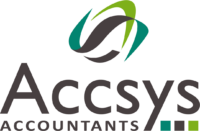
Businesses are started for many reasons and the main reason, underneath all the other ones, is to make a profit.
No one sets out to make a loss and an occasional monthly loss is not a problem, but this blog explores consistent losses. Why do some businesses make consistent losses?
To understand how losses can occur, first let’s look at what profit is. Profit is the amount left over after all your costs are taken into account and is measured against a time frame – normally a month, quarter, half-year or year.
There are two types of profit:
- Gross Profit – The profit after the direct costs related to your sale have been taken into account:
Gross Profit = Sales – Direct Costs
- Net Profit – The profit after all your costs, both direct and overheads, have been taken into account:
Net Profit = Gross Profit – Overheads
The Reasons
“My sales are too low, if we could just get the sales up” is often the reason quoted by loss-making business owners.
But there is more to it than that, in fact, there are two reasons that your business is making a loss:
- Lack of sales
- Costs are too high
- Lack of sales
A lack of sales is a valid reason that you may be making a loss, but this should only be a reason in the short term, if sales drop off then costs need to be cut.
If you have a lack of sales and you don’t immediately look at cutting costs, then you need a solid plan to turn the sales around. Without this, the losses will rack up, the business will spiral, and you will run out of cash.
Losses caused by a lack of sales can be financed by cash in the short term but eventually your business will fail.
- Costs are too high
So, the number one reason that any business makes a loss is that the costs are too high: either Direct Costs (Cost of Sale / Variable Costs) or Overheads (Fixed Costs).
This happens for many reasons, the main one being that the person who controls the costs is not aware of the business’ financial position and therefore doesn’t know what the level of costs should be for the amount of sales coming in.
So, not being aware of the finances is the root cause of costs being too high, because decisions being made have to take into account the finances of the business.
Consider this scenario, a business is trading hard but not charging enough; their price is too low which means Direct Costs are too high for the sales and they are making a loss.
But they don’t know that because they aren’t looking at the finances, so they take on more staff to do more work because everyone is super busy. But the business can’t afford this extra person, and this makes things worse financially.
Direct costs too high
Costs of Sale or Direct Costs are the cost you must incur in order to deliver the sales. They are otherwise known as Variable Costs because they vary with the sale.
These costs are broadly broken down into Labour and Materials, but can also include delivery charges, bank charges etc.
Shopping around for the best deal on direct costs is essential and an important task for most businesses, because it will enable you to keep your price down and stay competitive in the market.
This is easier to achieve when searching for the lowest cost on materials than for labour, but how you employ your labour can have an impact.
If you directly employ labour, you are at a disadvantage (from a cost control perspective) to those that outsource or subcontract. This is because you are paying for all the inefficiencies employees bring…sick leave, holiday and job over runs etc
Now, assuming you have the best deal, if you are still making a loss or less profit than you need, then your price is too low. Another symptom of your price being too low is that your order book is overflowing, and you are struggling to keep up with demand.
The law of supply and demand dictates that the lower your price, the more demand there will be. So, if you can’t cope with the work level, then raise the prices. You need to raise the price to a point where you are making a profit on every job or piece of work you will do.
Prices should be set to cover all your costs, make a significant margin to cover overheads and then leave enough for profit.
Have a read of our blog: How to Price Your Products or Services
Overheads are too high
The next thing to examine is whether your overheads are too high. Overheads are the fixed costs of the business, and this includes Office Costs, Admin Wages and Motor Expenses.
These should be reviewed periodically and reduced where possible. Be careful what contracts you sign for the business and their length. Where possible keep contract lengths short because you don’t know what can happen and the ability to cut costs is hampered when you are tied in for years.
It can be difficult to cut overheads because you are removing something that, in the past, you have deemed essential. But if the business can’t afford it then it must go. One thing to always bear in mind, is that £1 saved on overheads is £2/£3 less in turnover needed to break even.
Understanding your break even
Breakeven is the amount of sales you need to reach £0 profit in any given month or year. So, if you have an overhead of £20K and a Gross Profit Margin of 40%, then you would need £20,000/40% = £50,000 in Sales to Breakeven. £50,000 * 40% = £20,000.
Knowing this figure gives you a minimum target to work towards each month or year.
How we can help
We work with you to ensure that you know what key elements to look for on your business accounts, giving you the ability to understand your financial position. We offer free Xero Training to all clients and a FREE Xero Online Course to everyone. In addition, read our factsheet: 3 Key Xero Reports For Business Owners
If your accountant isn’t helping you to understand your business, please complete our contact us form or call us on 01622 671 835.
About Us
The aim of Accsys Accountants is to help our clients grow their businesses, by ensuring their finances do not get in the way of growth. We are Accountants in Maidstone, Kent who offer different level of services to suit all types of company, including Accounts, Tax Advice, Bookkeeping and Payroll and we do all of this through a fixed fee service with unlimited support.






